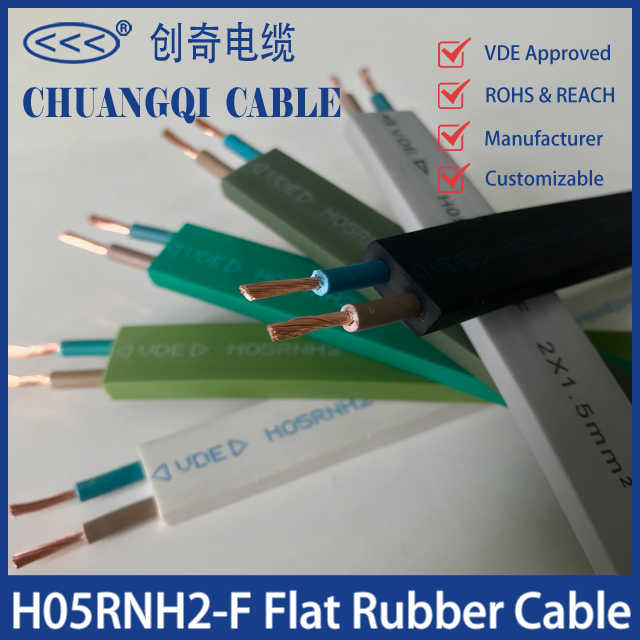1. Type VV and YJV: PVC type Festoon Lights Cable Singl […]
1. Type VV and YJV: PVC type Festoon Lights Cable Single Core Rubber Cable VDE, cross-linked polyethylene type power cables, can not be subjected to mechanical external force, suitable for indoor and tunnel bridge and pipeline laying. For example, the cross-Huangpu River power cable laid in the Dalian Road Tunnel in Pudong New Area uses a YJV copper core XLPE insulated PVC sheathed cable, because the cable will not be subjected to mechanical external forces in the tunnel, and it is not required Withstand large pulling forces.
2. Type VV22 and YJV22: inner steel tape armored power cable, which can bear certain mechanical external force, but cannot bear large tensile force. The YJV22 type cross-linked polyethylene insulated power cable has a long-term allowable maximum temperature of 90°C. Its aging resistance and environmental resistance are higher than that of the PVC insulated cable VV22. It has light weight, simple structure, convenient use, and no drop in laying. limit. Such as laying indoors, tunnels, cable trenches and directly buried underground in high-rise buildings, hospitals, subways, nuclear power plants, power plants, mines, petroleum, chemical industries, etc.

3. ZR-YJFE type, NH-YJFE type: flame-retardant, fire-resistant and other special radiation cross-linked power cables, the maximum long-term allowable working temperature of the cable can reach 125°C, and it can be laid in the ceiling or in the cable shaft of high-rise buildings And it is suitable for wet places. Flame-retardant cables should have flame-retardant properties. In order to extinguish, reduce or inhibit the burning of the material, 11 kinds of commonly used materials and engineering equipment must be added to the material or the material must be processed. Usually, a flame retardant is added to the material to make the material It has the function of preventing or delaying the spread of flame during combustion. That is, it burns on an open flame and extinguishes automatically after leaving the fire for a period of time. There are currently four levels of A, B, C, and D, and C level is generally used.
The characteristic of fire-resistant cable is that it still has the ability to conduct electricity when the cable is burned or even for a period of time after burning. It is mostly used in relatively important working environments, such as warships. Fire-resistant cables can have flame-retardant properties at the same time, but flame-retardant cables have no fire-resistant properties.
4. YJV32 type, WI>ZANYJFE type: inner steel wire armored power cable, low-smoke halogen-free A-class flame-retardant and fire-resistant power cable, which can withstand considerable mechanical external force. The prefix and subscript change are used to illustrate the cable Performance and places where it can be installed. The material used for the armor is steel tape, steel wire, etc. The main function of the armor layer is to prevent the cable from mechanical damage that may be encountered during the laying process, to ensure the integrity of the inner sheath, and to withstand a certain external force. Low-smoke, halogen-free, Class A flame-retardant and fire-resistant power cables are mostly used in places with high fire-proof requirements, such as indoors, tunnels, cable trenches, and pipelines.
For example, low-smoke halogen-free Class A flame-retardant and fire-resistant radiation cross-linked power cable WI>ZANYJFE has a maximum allowable working temperature of 125°C, which is suitable for laying in cable shafts and suspended ceilings of high-rise buildings. The submarine cable from Zhoushan to Ningbo uses VV59 copper core PVC insulated PVC sheathed thick steel wire armored cable, because it can withstand greater tension, has corrosion resistance, and is suitable for laying in water.